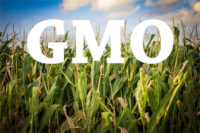TECH FLASH
Washington GMO initiative down to the wire after support drops
An advertising blitz from both sides has evened out public opinion.


What a difference a month and a few million dollars makes,” begins an October 21 report of The Elway Poll, an independent, nonpartisan public opinion trend analyst in Washington State. “Initiative 522, which would mandate labeling of genetically modified food, was leading by just four points last week after posting a 45-point lead five weeks ago—before the advertising campaigns had begun.”
The Elway Poll calls this initiative, which runs until November 5, one of the most expensive in state history, with advertising from both sides reaching the majority of voters. Eight in 10 surveyed had seen ads on Initiative 522 in the previous week, including 56 percent who had seen ads on both sides, 14 percent who had seen only ads in favor and 11 percent who had seen only ads against.
Of those who have seen both “pro” and “con” ads, 47 percent planned to vote for the initiative, while 43 percent planned to vote against it. Three out of four voters who had only seen ads on one side planned to vote that way.
It’s no surprise that advertising has had such penetration, given the over $23 million poured into the campaigns, according to The Oregonian. According to The Elway Poll, the food and biotech industries have spent more than $17 million fighting the measure, compared with $6 million by the measure’s backers.
Charles Benbrook, a Washington State University professor who specializes in sustainable agriculture, says a loss in Washington may put the food industry under pressure to agree to national labeling standards rather than face the headache of state-by-state rules.
According to a white paper from the Washington State Academy of Sciences, consumers may see higher prices at the store if the initiative passes. That’s due to both the cost of implementation and the possibility of companies substituting non-GMO ingredients to avoid a potentially stigmatizing label.
Proponents of the law frame the issue in terms of choice, while opponents say the measure is riddled with exemptions and inconsistencies. The messaging battle will continue to play out on airwaves across Washington until the first Tuesday in November. Now, months into the campaign, the only things that seem sure are that the debate will be contentious, and the vote will be close.
Looking for a reprint of this article?
From high-res PDFs to custom plaques, order your copy today!






